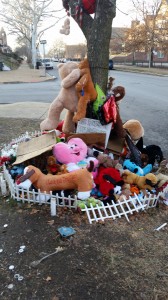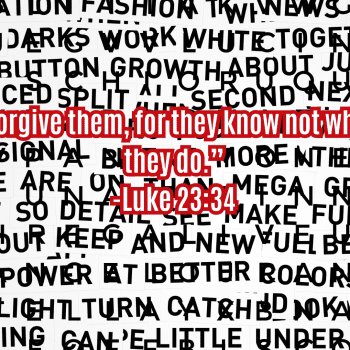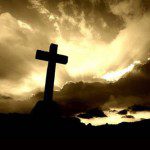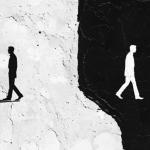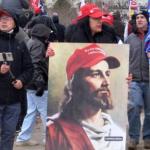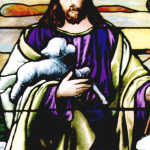From the ARTS ONLINE blog
Contributors to the “Race Matters” blog sponsored by the Wabash Center for Teaching and Learning in Theology and Religion in the Fall of 2014 were invited to offer a tactic they have used in their classrooms—both undergraduate and graduate—for engaging difference in meaningful ways. Below is my suggestion for doing so.
Engaging the City: Memorials and the Making of Theology
The Context: an Urban Theology class at Eden Theological Seminary, comprised of fourteen students (eight white and six African American), with an immersion experience in Ferguson, Missouri.
Description of the Strategy: Commonly called “roadside memorials,” “urban memorials,” or “street memorials,” I suggest that the memorial dedicated to Michael Brown is a site for theological reflection because it gives insight into how people construct ideas of the sacred in the aftermath of a tragic death. Since theological reflection, itself, was a major emphasis of the class, I wanted students to offer theological reflection at this site. Reflection typically begins with me asking for an overall general response to what we saw or heard. To probe a little deeper, I then ask how the readings shaped students’ reflections. I sometimes ask students to offer one or two words that describe their experience or just simply ask, “Where did you see God/Spirit today?”
Pedagogical Purpose: Roadside memorials and the art that people attach to them do three things. First, they remind people that death happened here. In a society that does not like to talk about death and that wants to move away from death as quickly as possible, memorials force us to remember that a death happened here. Second, these memorials remind us that the community does not forget the person who has died. They proclaim that the community not only remembers the deceased, but that the community also loved the person. This may help with the grieving process. Finally, these memorials offer for church leaders creative ways to do liturgy and other worship activities within their own congregations. For example, this may lead some to offer “services” on the street while the people are creating the memorial or to offer prayer services and reflections not only on death, but also on life as healing continues—for both individuals and the community.
Why it works: The site of the Michael Brown memorial—as well as other art we saw while in Ferguson—had a profound impact on the students. First, some discovered the “Divine” in what they typically do not think of as “art.” Furthermore, with this discovery, students can see, expand, or construct the Divine in much bigger and deeper ways. Finally, if they did not realize it before, by seeing the Divine in these rudimental art forms, students now understand that we do not “bring” the Divine to anyone—but if we are still enough, with ears to hear and eyes to see, we can discover that the Divine is already there.

